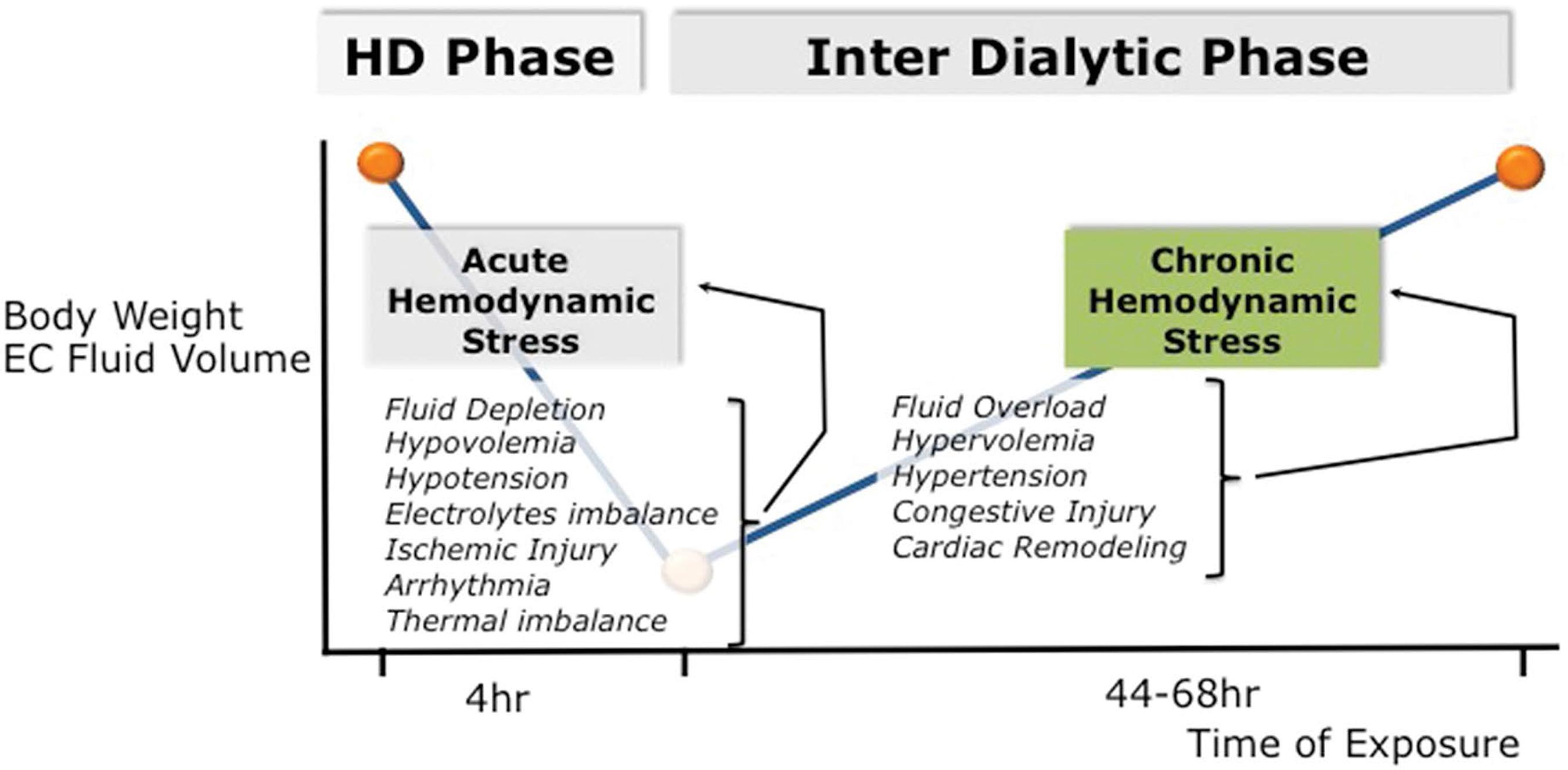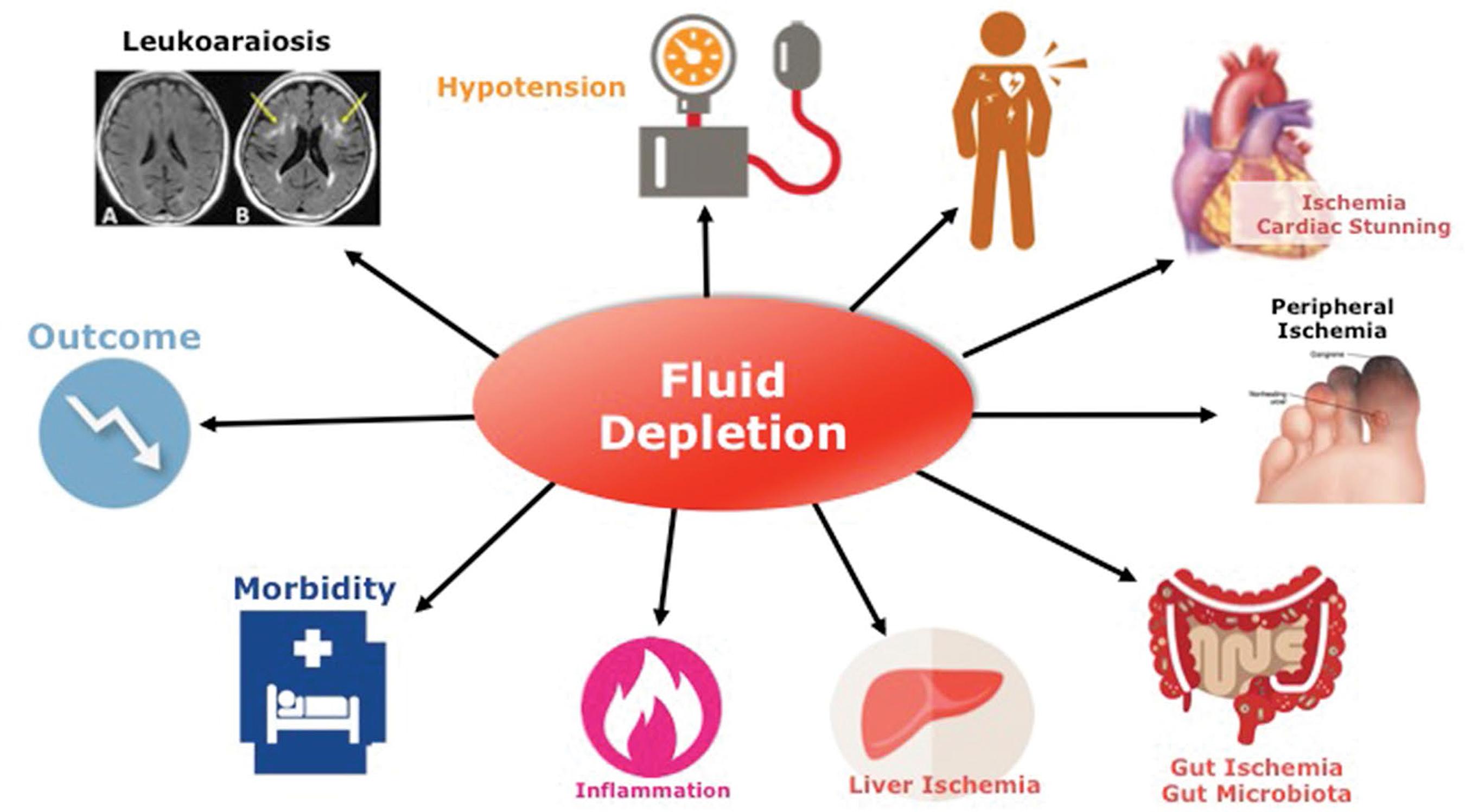Abstract
Fluid volume and hemodynamic management in hemodialysis patients is an essential component of dialysis adequacy. Restoring salt and water homeostasis in hemodialysis patients has been a permanent quest by nephrologists summarized by the ‘dry weight’ probing approach. Although this clinical approach has been associated with benefits on cardiovascular outcome, it is now challenged by recent studies showing that intensity or aggressiveness to remove fluid during intermittent dialysis is associated with cardiovascular stress and potential organ damage. A more precise approach is required to improve cardiovascular outcome in this high-risk population. Fluid status assessment and monitoring rely on four components: clinical assessment, non-invasive instrumental tools (e.g., US, bioimpedance, blood volume monitoring), cardiac biomarkers (e.g. natriuretic peptides), and algorithm and sodium modeling to estimate mass transfer. Optimal management of fluid and sodium imbalance in dialysis patients consist in adjusting salt and fluid removal by dialysis (ultrafiltration, dialysate sodium) and by restricting salt intake and fluid gain between dialysis sessions. Modern technology using biosensors and feedback control tools embarked on dialysis machine, with sophisticated analytics will provide direct handling of sodium and water in a more precise and personalized way. It is envisaged in the near future that these tools will support physician decision making with high potential of improving cardiovascular outcome.
Keywords:
Water-Electrolyte Balance; Hemodynamic Monitoring; Blood Pressure; Cardiovascular Deconditioning; Renal Dialysis; Treatment Outcome

 Fluid and hemodynamic management in hemodialysis patients: challenges and opportunities
Fluid and hemodynamic management in hemodialysis patients: challenges and opportunities



